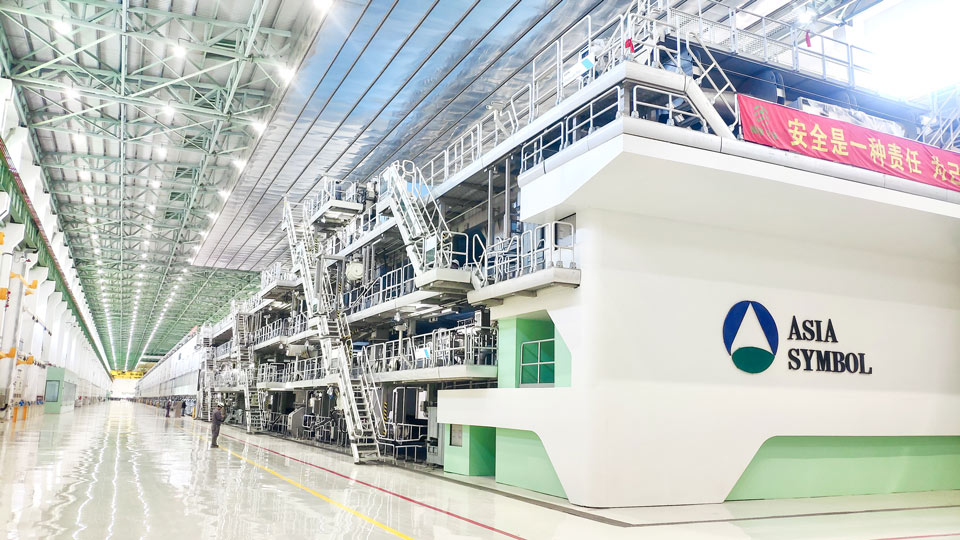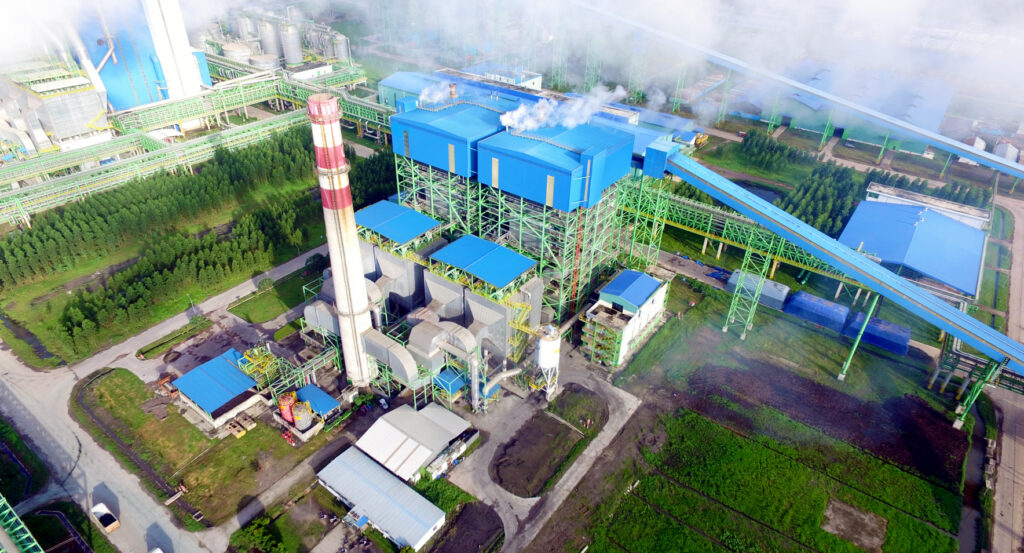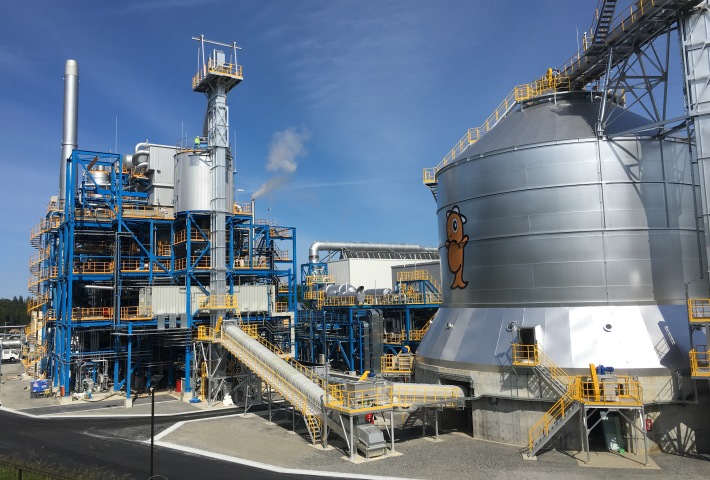Asia’s Pulp and Paper Industry in 2025: Navigating Trade Tensions, Sustainability Mandates and Technological Transformation
By Nooraishah Omar, paperASIA Magazine
The pulp and paper industry in Asia stands as one of the largest and most rapidly evolving sectors globally, driven by swift economic growth, rising consumer demand and tightening environmental regulations. In 2025, the industry is navigating a complex landscape shaped by geopolitical trade tensions, raw material constraints and increasing pressure to adopt sustainable and digital solutions. Countries like China and Indonesia are adapting to regulatory and economic shifts, while the broader region is embracing renewable energy, technological integration and innovation to meet global sustainability and efficiency standards. These developments are not only transforming traditional manufacturing processes but also positioning Asia as a critical player in the future of global pulp and paper markets.

China: Trade Tensions and Raw Material Shortages
China is the largest producer and consumer in Asia; heavily import-reliant for raw pulp. China’s pulp and paper sector is grappling with significant hurdles. The ongoing U.S. tariff policies have led to hesitancy among Chinese paper manufacturers, who are increasingly sourcing pulp locally to mitigate risks associated with unpredictable pricing. According to Cristian Infante, who heads Copec’s forestry arm Arauco, the Chinese demand was “pretty good” and supported a solid market if tariff uncertainties are lifted. “I wouldn’t say it’s booming,” he said. “All this volatility that we have seen due to the tariff issue has affected the market.”
However, the country is also facing a critical shortage of domestic raw materials, particularly virgin wood pulp, compounded by stringent environmental regulations and shifts in global demand. There is an estimated annual deficit of around 10 million tons of pulp in the country1. This shortage is made worse by the government’s waste paper import bans, which have restricted access to recycled materials that were previously a significant resource for manufacturers. Low recycling rates in the country is a result of the underdevelopment of classification and recycling systems for waste paper. Rising costs associated with imports of wood pulp and chips have further strained profit margins in an already competitive market. To address these issues, the Chinese government has implemented various macro policies aimed at upgrading the industry by focusing on transitions towards high-tech, high-value-added production methods while promoting resource recycling and cleaner production practices.
Indonesia: Environmental Regulations and Cost Pressures
Indonesia’s pulp and paper industry is experiencing environmental constraints and high energy costs. Government regulations, particularly the forest and peat moratorium, significantly limit the expansion of pulpwood plantations. This moratorium, initially introduced in 2011 and made permanent in 2019, prohibits issuing new land-use licenses for activities like pulpwood plantations in primary forests and peatlands. This policy aims to reduce deforestation and emissions from land clearing, thus protecting Indonesia’s remaining forests and peatlands.
In 2025, high energy costs, particularly for coal and gas, are projected to significantly impact the Indonesian pulp and paper industry. While companies in other ASEAN countries pay less than USD6 per million British thermal unit (MMBtu), Indonesian producers are faced with gas prices ranging between USD9 and USD11/MMBtu. This disparity places Indonesian manufacturers at a competitive disadvantage, particularly in the export markets.
The Indonesian government recognises the environmental impact of energy consumption in the pulp and paper industry and policies are being developed to encourage the adoption of cleaner energy sources and to phase out coal usage by 2050. These initiatives aim to reduce greenhouse gas emissions and align with global sustainability goals .
Sustainability and Innovation
Sustainability remains a central focus in the pulp and paper industry. It is increasingly adopting renewable energy initiatives to enhance sustainability and reduce carbon emissions. Some notable efforts include:
- Asia Pulp & Paper (APP) – Indonesia
Biomass energy utilisation at APP’s OKI mill in South Sumatra, where 95% of the utilized renewable energy is sourced from biomass, including black liquor – a byproduct of the pulping process. This significantly reduces reliance on fossil fuels and supports the company’s goal to cut carbon emissions by 30% by 2030.

- Japan Pulp & Paper Company
Since 2016, Japan Pulp & Paper has operated a 14MW woody biomass power plant in Noda Village, Iwate Prefecture, using local timber and palm kernel shells (PKS) as fuel. This initiative contributes to the company’s renewable energy goals and supports regional economic revitalisation. The company has also established solar power generation facilities in Kushiro City, Hokkaido, and other locations further diversifying its renewable energy portfolio.2

These initiatives demonstrate the pulp and paper industry’s commitment to integrating renewable energy solutions, aligning with global sustainability goals and enhancing energy efficiency.
The pulp and paper industry in Asia is also undergoing a significant digital transformation, integrating Artificial Intelligence (AI), the Internet of Things (IoT) and automation to enhance efficiency, sustainability and competitiveness.

Radix, one of the global technological solutions companies, is leveraging AI and Industrial Internet of Things (IIoT) technologies to optimise operations in the pulp and paper industry. They utilise data analytics to identify bottlenecks and value waste streams, helping customers define problem statements and create scalable solutions.
There are several benefits of technological integration, such as:
- Enhanced efficiency: Automation and real-time data analytics streamline operations, reducing downtime and optimising resource utilisation.
- Improved sustainability: AI and IoT enable better monitoring and management of environmental impacts, supporting sustainability goals.
- Cost reduction: Predictive maintenance and process optimisation lead to cost savings by preventing equipment failures and reducing waste.
- Agility and scalability: Digital solutions provide flexibility to adapt to market changes and scale operations as needed.
Despite the advantages, integrating AI, IoT and automation do present challenges in its implementation.
- Legacy systems: Many mills operate on outdated systems, making integration with modern technologies complex.
- Data silos: Fragmented data across departments hinder comprehensive analysis and decision-making.
- Skill gaps: A shortage of skilled personnel to manage and operate advanced technologies poses a barrier.
- High initial costs: The investment required for new technologies can be prohibitive, especially for smaller manufacturers.
Technological integration in the pulp and paper industry is driving significant advancements in efficiency, sustainability and competitiveness. While challenges exist, the digital transformation gives opportunities for companies to innovate and lead in the global market.
Market Growth and Consumer Trends
The pulp and paper market is poised for dynamic growth in 2025, driven by increased demand for sustainable packaging, technological advancements and regional economic developments. The Asia-Pacific pulp and paper market is projected to reach USD217.7 billion by 2034, growing at a CAGR of 3.92% from 2024 to 2034.3
The packaging sector is driving the demand in the industry. Asian demand for containerboard is projected to grow by 3.9% in 2025, supported by economic recovery and increased trade. Meanwhile, boxboard’s demand is expected to rise by 3.3% in 2025, fueled by the expansion of e-commerce and consumer goods packaging.4 The shift towards paper-based packaging is accelerated due to consumer preference for sustainable products and regulatory pressures to reduce plastic use.
Despite economic challenges, China’s pulp and paper industry remains a significant player, with a focus on transitioning to more sustainable practices and increasing domestic production. Similarly, the Indian market is expanding rapidly, driven by urbanisation, increased disposable income and a growing preference for eco-friendly packaging solutions. Southeast Asian countries like Indonesia, Vietnam and Malaysia are emerging as key manufacturing hubs, benefiting from cost advantages and access to raw materials.
In summary, Asia’s pulp and paper industry in 2025 is defined by a dual narrative of challenge and opportunity. Trade volatility, raw material shortages and high operational costs are testing the resilience of leading producers like China and Indonesia. At the same time, the industry is undergoing a profound transformation through sustainability initiatives, renewable energy integration and digital innovation and transformation. With continued investments in clean energy and smart manufacturing, and rising demand for eco-friendly packaging, the region is well-positioned for long-term growth. As market dynamics shift and environmental expectations rise, Asian pulp and paper producers who embrace adaptability and innovation will lead the sector into a more sustainable and competitive future.
- https://www.researchandmarkets.com/reports/6024827/asia-pacific-pulp-paper-market-outlook
↩︎ - https://www.kamipa.co.jp/eng/sustainability/environment/climate-change ↩︎
- https://www.precedenceresearch.com/pulp-and-paper-market ↩︎
- https://www.fastmarkets.com/insights/asian-paper-packaging-outlook-2025-preview/ ↩︎



